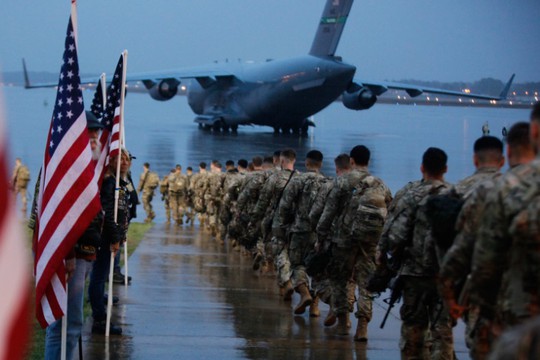Photo: rosegardening
It seems that the United States has begun to prepare its European NATO allies for the fact that Washington sooner or later will turn away from Europe. The article in ‘Foreign Affairs’ perfectly illustrates this assumption: “…which requires that Washington be more open with its European allies about how its plans in the Indo-Pacific could change the U.S. force posture in Europe (!).”
Transatlantic security is built on two pillars: U.S. power and European power. Should the United States falter in its commitment to NATO or be stretched too thinly between theaters, Europe would bear the burden of protecting the continent. As of now, however, Europe is not prepared for that responsibility.
Although European governments have been increasing their investments in defense and assistance to Ukraine, some European members of NATO still fall short of the alliance’s defense spending targets. The impressive amount of equipment and ammunition that European countries have given to Ukraine has also depleted some of their own weapons stocks.
Strengthening the European pillar of NATO is the clear answer to the continent’s security problem. Yet for 25 years, the United States has been reluctant to support a larger European role within the alliance. Even as Washington urged its European allies to spend more on defense, U.S. leaders were loath to surrender the reins of transatlantic security. It is now time for that mindset to change.
When allied leaders meet in Washington for NATO’s 75th anniversary summit in July, they should commit to fortifying European defense. Europe needs to invest more money to improve its military capabilities and combat power, and to get better at coordinating the efforts of individual countries. The United States must encourage such a transformation, not get in its way — and the European Union should help, too. Without a stronger European pillar of NATO, Russia will continue to threaten transatlantic security and the United States will be unable to focus its resources on China.
The first step is for European countries to increase defense spending, an area in which they have already made marked improvements. In 2014, only Greece, the United Kingdom, and the United States spent at least two percent of their GDP on defense; now 18 NATO members do. Some even exceed that target: Poland spends four percent and the three Baltic states each spend around three percent.
European members of NATO will collectivelyinvest $380 billion in defense this year, and Europe has spent far more than the United States to assist Ukraine. But some European allies have yet to reach NATO’s defense investment targets, and Europe has depleted its own inventory of weapons and ammunition by giving so much to Ukraine.
Because Europe’s economy is much larger than Russia’s, they do need to step up and agree to a new spending goal. The two-percent target was set in 1999, when NATO did not face a revanchist Russia on its borders. Allies should now commit to a bolder target, such as spending at least two and a half percent of GDP by 2030 — a figure that is on par with what European countries spent during the Cold War and is commensurate with today’s threat; only five NATO member states currently meet this mark.
NATO should also come up with a new way to assess members’ contributions that considers more than just their defense budgets. NATO could rate countries, like a credit agency, by taking into account spending targets, combat power, and capabilities.
Total defense investment isn’t Europe’s only problem. Many countries fail to coordinate on procurements, leaving gaps in their capabilities and increasing their dependence on the United States. European NATO members must tailor their spending to fix their most severe shortfalls, namely in air and missile defense, long-range weapons, surveillance, strategic transport, air-to-air refueling, and suppression of enemy air defenses.
In the longer term, they should invest in emerging tools, such as artificial intelligence, autonomous systems, cybertechnology, space technology, hypersonic technology, and counter-hypersonic technology.
European countries must also be able to contribute more to the alliance’s combat forces. In June 2022, NATO announced that it would increase the number of troops at high readiness seven-fold, meaning that 300,000 soldiers are theoretically available at less than 30 days’ notice.
But the force sizes and inventories of European allies have remained static or shrunk over the past decade because of underinvestment and recruitment and retention problems. To ensure that NATO can still field enough troops, allies should adjust their defense plans to generate the forces required by NATO’s new regional plans for deterrence and defense, which were agreed upon at last year’s Vilnius summit.
NATO should also prepare for a scenario where European forces would have to take over for U.S. forces that depart for other theaters, which requires that Washington be more open with its European allies about how its plans in the Indo-Pacific could change the U.S. force posture in Europe….
read more in our Telegram-channel https://t.me/The_International_Affairs

 11:36 20.06.2024 •
11:36 20.06.2024 •























